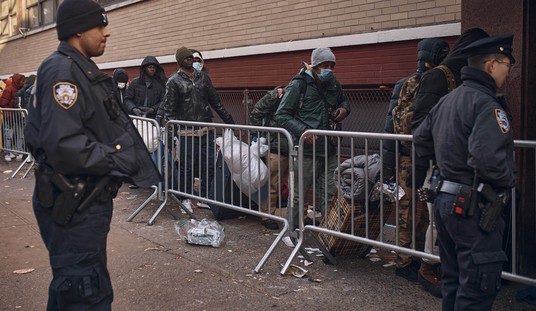The Washington Post has a story today about the network of tunnels dug beneath Gaza by Hamas fighters. The entire network is estimated to stretch over 300 miles despite the Gaza strip being on 25 miles long. It’s where Hamas fighters have been hiding out since the start of Israel’s military response to the 10/7 attack. But the IDF has no intention of entering the tunnels which are likely booby-trapped.
Israeli military protocol generally prohibits regular ground troops from entering tunnels, as the chances of being killed or captured is too high. Israelis have seen their soldiers grabbed and dragged into tunnels, so the likely strategy will be to attempt to destroy them from a distance.
In an interview last week with The Washington Post, senior Hamas leader Ali Baraka, based in Beirut, said that “the fighters are underground, waiting for the battle.” He claimed that there are 40,000 operatives in the Izzedine al-Qassam Brigades, Hamas’s military arm, and 20,000 in other factions. “They can’t handle 60,000,” he said, calling out the Israeli military…
Kobi Michael, a senior researcher at Israel’s Institute for National Security Studies, said, “We are not going to enter the tunnels themselves; we are not going to fight in the tunnels, 30, 40 meters under the ground.”
“We have, I assume, some creative means and manners that will enable us to destroy these tunnels on the heads of Hamas terrorists that are hiding inside,” Michael said, declining to speculate on the use of classified sensors in the field.
So what are Israel’s options if they aren’t going to send troops into the tunnels to fight? The first and most obvious is aerial bombardment of suspected tunnel sites. That’s what Israel has been doing so far but the obvious downside is that Hamas has placed its tunnels under civilian sites including schools and hospitals, using civilians as human shields. Even apart from the Palestinian civilians, airstrikes risk killing Israeli hostages who are being held in the tunnels.
The IDF does have some special forces who are trained in tunnel combat but not enough of them to defeat all of Hamas. They use special night vision goggles which aren’t dependent on ambient light and other specialized equipment including radios designed to work better underground.
Other options include what are being called “sponge bombs” which are similar to the kind of expanding foam used in home construction projects.
The Israel Defense Forces (IDF) has been testing the chemical bombs, which contain no explosives but are used to seal off gaps or tunnel entrances from which fighters may emerge.
The IDF has not commented on the use of the so-called “sponge bombs”, which create a sudden explosion of foam that rapidly expands and then hardens.
Its soldiers were seen deploying the devices during exercises in 2021. The army has set up a mock tunnel system at the Tze’Elim army base near the border with Gaza…
The “sponge bomb” – technically a liquid emulsion – is hazardous to work with, and some Israeli soldiers have lost their sight through mishandling the mixture.
Finally, there are two other options designed to force Hamas fighters to abandon the tunnels. One is to use smoke bombs, literally smoking them out. The other is to flood the tunnels with sea water.
The geography of Gaza argues strongly for the stratagem of flooding the tunnels. It would force the enemy above ground where they can more easily be destroyed, dramatically reduce the Israeli casualties required to accomplish that task and resolve the problem of dealing with parts of the tunnels that are too deep to destroy through bombing. Most importantly, flooding is a permanent or near-permanent solution to the Gaza tunnel problem. Once accomplished, pumping them out enough to be usable again would be both extremely costly and—especially in conjunction with bombing—exceptionally difficult. The timing of executing a flooding strategy is flexible; some could be flooded now, others later, and still others once they’re discovered.
The engineering is straightforward. Egypt flooded thirty-seven cross-border tunnels in southern Gaza back in 2015 in what stands as a practical proof of concept in this location. Seawater from the Mediterranean would be pumped directly into the tunnel openings through short pipelines…
Rough calculations indicate that if a single pipe were used for each of eleven tunnels, with each pipe pumping at a very conservative 100 gallons per minute, it would take about seven and a half months for all eleven tunnel networks to fill. Pumping water at ten times that rate, however, is routinely done today everywhere from wastewater treatment plants to oil field operations.
The author of that piece points out that once the narrow tunnels are half full, they would be unusable. Israel would need to secure an area to run the pipelines for a few weeks. That probably wouldn’t be easy but perhaps better than fighting Hamas in the tunnels.








Join the conversation as a VIP Member